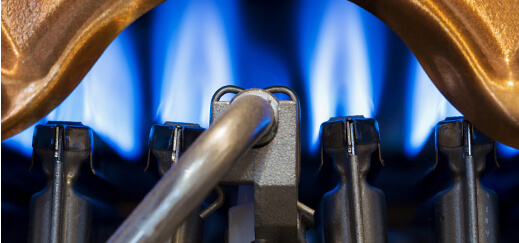How Tank and Tankless Water Heaters Work
The basic design of water heaters hasn’t changed much in over 100 years since they were invented.

The basic design of water heaters hasn’t changed much in over 100 years since they were invented.
That was until tankless water heaters came along.
To understand why tankless water heaters are faster, more reliable, and more efficient than tank water heaters it’s important to understand the fundamentals of how both designs work. You’ll then be able to see why tankless has improved a home appliance that hasn’t changed in over 100 years.
Tank Water Heaters
Tank water heaters were first introduced to the market in 1889. Back then, it was a revolutionary technology. Can you imagine having a water heater installed in your home for the first time? Since that point, the fundamental design hasn’t changed. The basic premise is water is kept hot in an insulated tank and pumped from the tank to a hot water tap when it is needed.
Tank water heaters constantly keep a supply of hot water in storage. It heats the water with a burner at the bottom of the tank. The burner turns on whenever the standby water dips below the desired temperature or new water is pumped in to replace any water that’s being used.
For a tank water heater, water is always being heated or kept hot. When you turn on a hot tap, the tank water heater will feed hot water into your pipe system out the top of the unit. A thermometer inside the tank constantly checks the temperature of the water to keep it at the desired temperature. As it is doing this, it simultaneously feeds the same amount of cold water to the bottom of the tank. There is always water in the tank, but the temperature of that water may not always be as hot as you’d like it to be. The downside of this is that once the ready supply of hot water runs out, that’s it. While your tank unit is trying to heat the water that replaced all the hot water you used, you’re not going to have any hot water for as long as you desire. The potential of running out of hot water is a key disadvantage with using tank units.
Another disadvantage with tank units is what’s known as standby heat loss. Standby heat loss is all the energy that a tank water heater wastes while it is keeping unused water hot. The tank heater doesn’t know when water is going to be needed, so it is programmed to keep water hot at all times. Since homeowners aren’t always using hot water, this inevitably leads to energy being wasted as the water gets hot, cools off, then needs to be heated again.

Tankless water heaters
With tankless water heaters, water is heated only on demand. This means that water is only heated when you actually need hot water. The tankless unit does this by running water through a heat exchange inside the unit when you or an appliance in your home turns on a hot water tap.
This heating process is the beauty and genius behind what makes a tankless water heater far more efficient and reliable than a traditional tank water heater. Tankless water heaters heat far less water and use far less energy than tank water heaters because they only heat and always heat the water you need. Tank water heaters constantly keep water hot and therefore end up wasting a lot of energy.
The heat exchange works by feeding cold water through one end, heating the water up while it’s in the tankless unit then feeding it out at the desired temperature at the other end.
A tankless heater needs to purge all the cold water from the line while waiting for the heater to heat the water from 38-42 degrees to 120 degrees Fahrenheit. Because of this a lot of our customers go with a recirculating unit to conserve water and have the water more instantaneous. The recirculating unit will feed that same cold water back into the tankless unit, this means that the water gets through the tankless unit faster, doesn’t get wasted, and you’ll have hot water at your fingertips even faster.
The mechanical process of what is done may vary depending on your model and type of tankless water heater. To find out how powerful your tankless water heater needs to be check out our blog post “What Size Tankless Water Heater Do I Need?”
It’s as though your tankless water heater is a miniature manufacturing plant that only makes hot water. It takes in the cold water, puts it through the blazing hot pipe, then it comes out as hot as you’d like.
Here’s an image illustrating how that process works.

Conclusion and other sources
Tankless water heaters are an innovation that was able to break into a market to be faster, more reliable, and more efficient.
If you’d like to learn more about tankless water heaters check out these excellent sources.
In this video, Steve from Bailey Line Road gives an excellent overview and demonstration of how tankless water heaters work.
This is a short video from Rinnai with a technical demonstration of how tankless water heaters work. Check it out if you want a more clear demonstration of the mechanical process of how tankless units work.
Here’s an article from the department of energy regarding tankless water heaters. They emphasize the efficiency that they bring over tank units.
If you’re thinking about getting a new water heater and you’re located in Minnesota, contact us here or give us a call at (612) 712-1419.
Contact Information
Use the form to request an appointment. Walk-ins are welcome too.
Get In Touch
"*" indicates required fields
